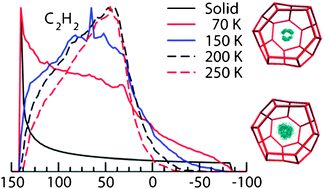Molecular dynamics simulation of NMR powder lineshapes of linear guests in structure I clathrate hydrates†
Abstract
We perform molecular dynamics simulations (up to 6 ns) for the structure I clathrate

* Corresponding authors
a Department of Chemistry, Isfahan University of Technology, Isfahan, Iran
b
Centre for Catalysis Research and Innovation, Department of Chemistry, University of Ottawa, Ottawa, Ontario K1N 6N5, Canada
E-mail:
saman.alavi@nrc-cnrc.gc.ca, twoo@uottawa.ca
We perform molecular dynamics simulations (up to 6 ns) for the structure I clathrate

 Please wait while we load your content...
Something went wrong. Try again?
Please wait while we load your content...
Something went wrong. Try again?
H. Mohammadi-Manesh, S. Alavi, T. K. Woo and B. Najafi, Phys. Chem. Chem. Phys., 2011, 13, 2367 DOI: 10.1039/C0CP01920H
To request permission to reproduce material from this article, please go to the Copyright Clearance Center request page.
If you are an author contributing to an RSC publication, you do not need to request permission provided correct acknowledgement is given.
If you are the author of this article, you do not need to request permission to reproduce figures and diagrams provided correct acknowledgement is given. If you want to reproduce the whole article in a third-party publication (excluding your thesis/dissertation for which permission is not required) please go to the Copyright Clearance Center request page.
Read more about how to correctly acknowledge RSC content.
 Fetching data from CrossRef.
Fetching data from CrossRef.
This may take some time to load.
Loading related content
